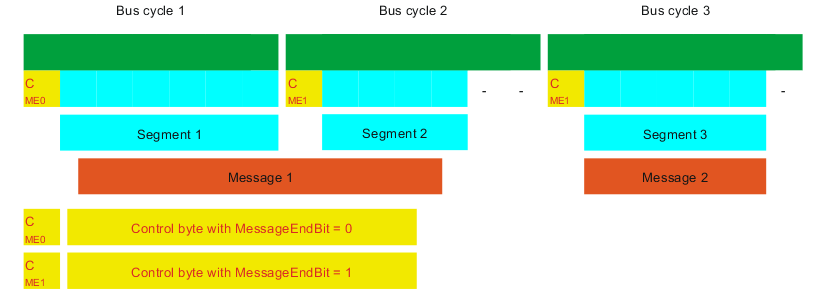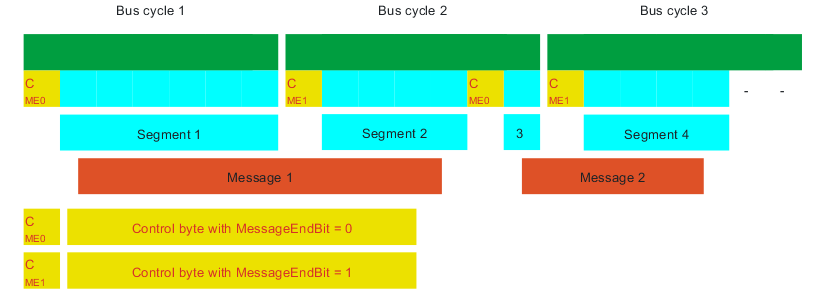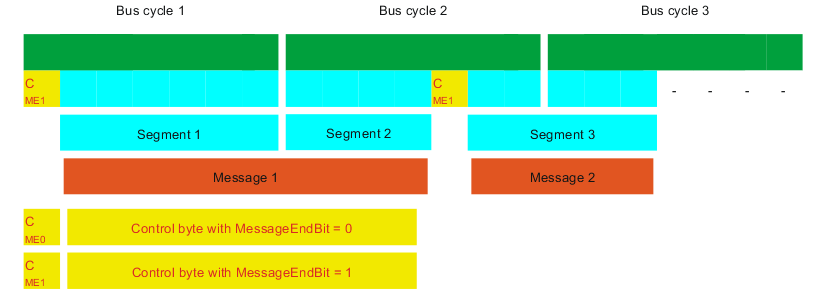X20CM4800X - Data sheet V1.04
FlatstreamMode
In the input direction, the transmit array is generated automatically. This register offers 2 options to the user that allow an incoming data stream to have a more compact arrangement. Once enabled, the program code for evaluation must be adapted accordingly.
Information:
All B&R modules that offer Flatstream mode support options "Large segments" and "MultiSegmentMTUs" in the output direction. Compact transfer must be explicitly allowed only in the input direction.
Bit structure:
Description |
Value |
Information |
|
0 |
MultiSegmentMTU |
0 |
Not allowed (default) |
1 |
Permitted |
||
1 |
Large segments |
0 |
Not allowed (default) |
1 |
Permitted |
||
2 - 7 |
Reserved |
||
By default, both options relating to compact transfer in the input direction are disabled.
•The module only forms segments that are at least one byte smaller than the enabled MTU. Each sequence begins with a control byte so that the data stream is clearly structured and relatively easy to evaluate.
•Since a Flatstream message is permitted to be any length, the last segment of the message frequently does not fill up all of the MTU's space. By default, the remaining bytes during this type of transfer cycle are not used.
Fig.: Message arrangement in the MTU (default)
With this option, InputMTU is completely filled (if enough data is pending). The previously unfilled Rx bytes transfer the next control bytes and their segments. This allows the enabled Rx bytes to be used more efficiently.
Fig.: Arrangement of messages in the MTU (MultiSegmentMTUs)
When transferring very long messages or when enabling only very few Rx bytes, then a great many segments must be created by default. The bus system is more stressed than necessary since an additional control byte must be created and transferred for each segment. With option "Large segments", the segment length is limited to 63 bytes independently of InputMTU. One segment is permitted to stretch across several sequences, i.e. it is possible for "pure" sequences to occur without a control byte.
Information:
It is still possible to split up a message into several segments, however. If this option is used and messages with more than 63 bytes occur, for example, then messages can still be split up among several segments.
Fig.: Arrangement of messages in the MTU (large segments)
Using both options at the same time is also permitted.
Fig.: Arrangement of messages in the MTU (large segments and MultiSegmentMTUs)



